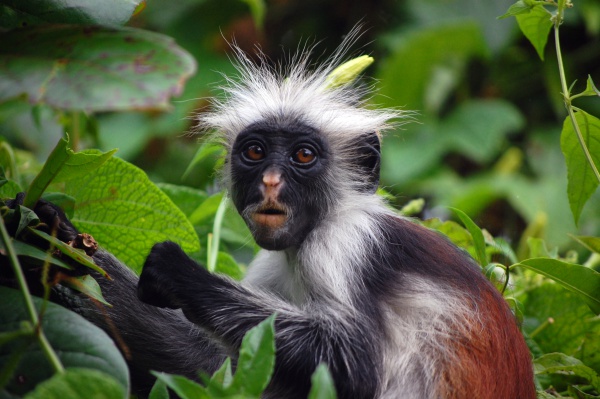Facts About Zanzibar red colobus
The Zanzibar red colobus, also known as Kirk's red colobus, is an intriguing and endangered monkey species native to Unguja in the Zanzibar Archipelago. Discovered by Sir John Kirk, this distinctive monkey has been a focus for conservationists since the 1990s.
What sets the Zanzibar red colobus apart is its unique evolutionary path. Isolated from mainland colobus monkeys, it developed specific characteristics to adapt to its environment. You can identify this monkey by its striking red and black coat, long tail, and smaller head.
Primarily arboreal, these monkeys have a diet rich in young leaves, seeds, flowers, and unripe fruit. They are social animals, forming groups with several females and maintaining strong bonds among males. Regarding reproduction, females exhibit exceptional care, typically giving birth to one or two infants every two years. Communication within the group is vital, with different calls indicating diverse behaviors and situations.
The Zanzibar red colobus faces significant threats from habitat loss, hunting, and the pet trade. Fortunately, numerous organizations are working diligently to protect them. These efforts include classifying the species as 'Class A' for total protection under the African Convention, running awareness campaigns, and creating protected zones.
Conservation is essential to ensure the survival of this remarkable species, and with continued effort, there is hope for the Zanzibar red colobus.

 Democratic Republic of the Congo
Democratic Republic of the Congo